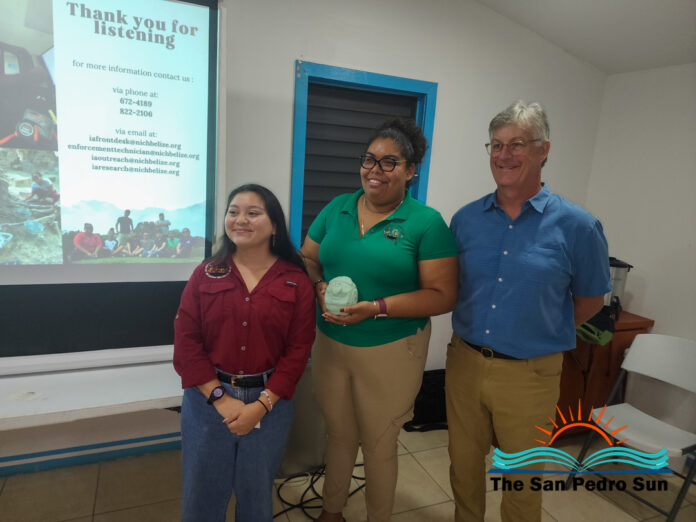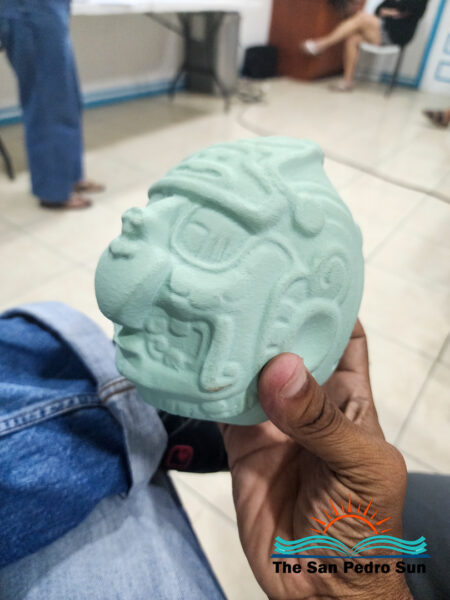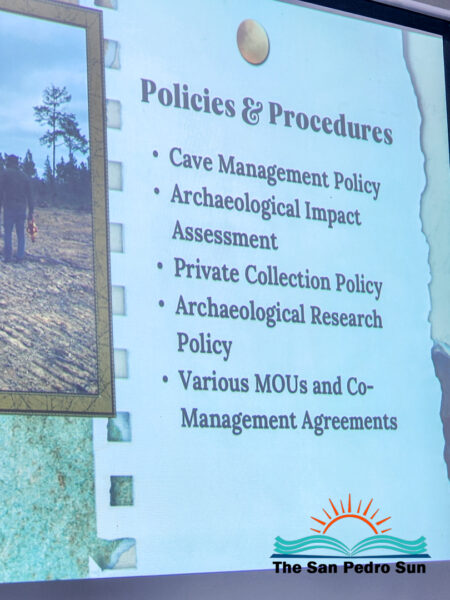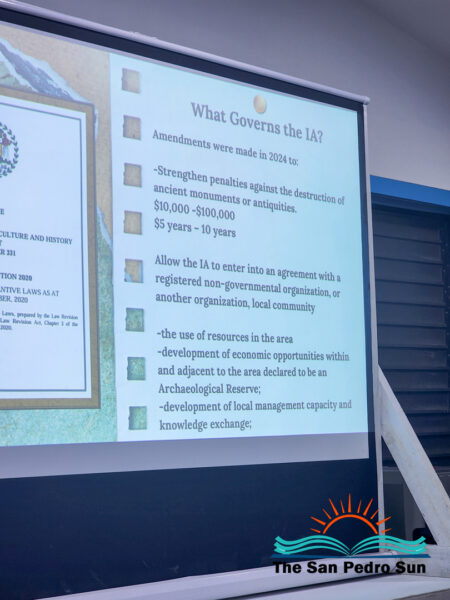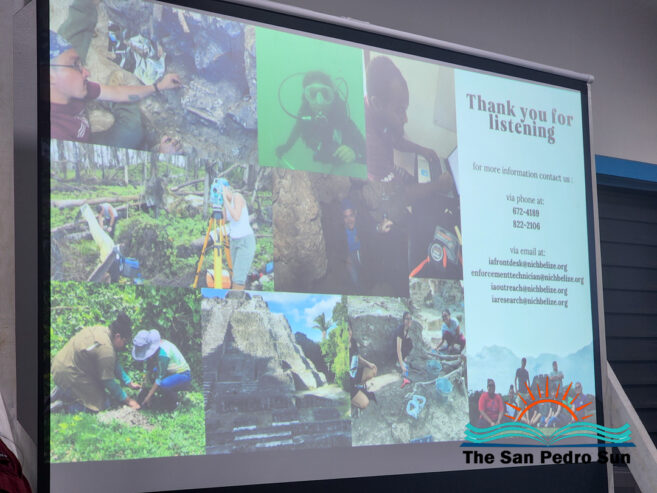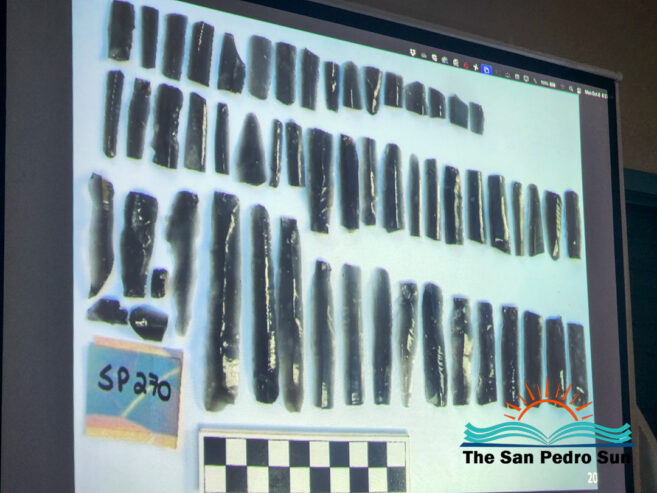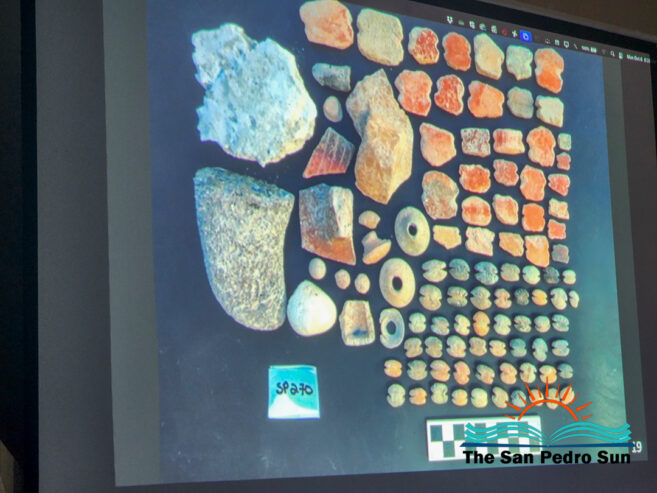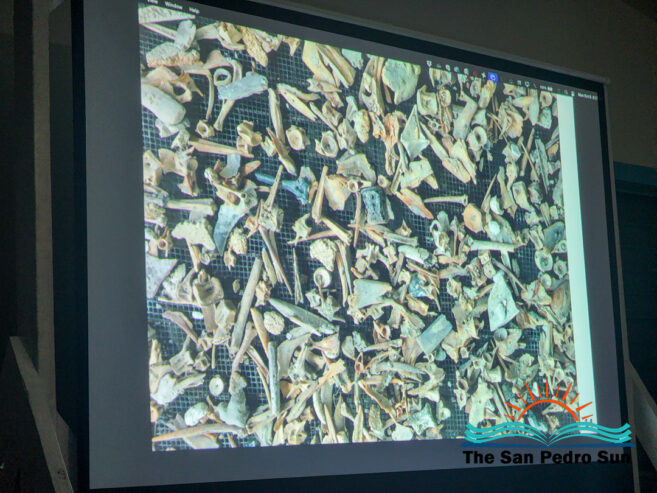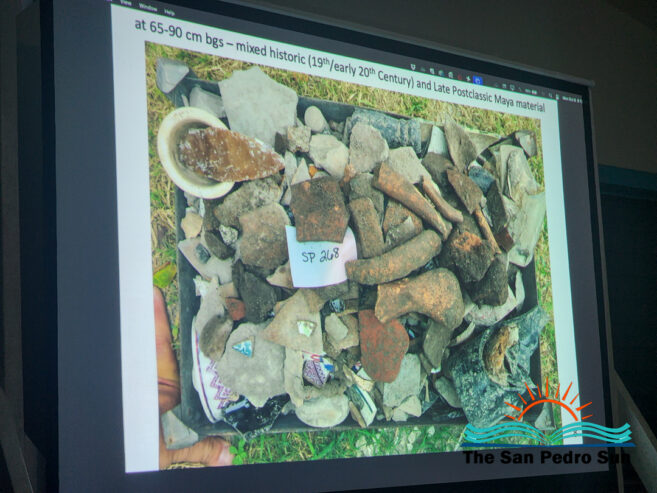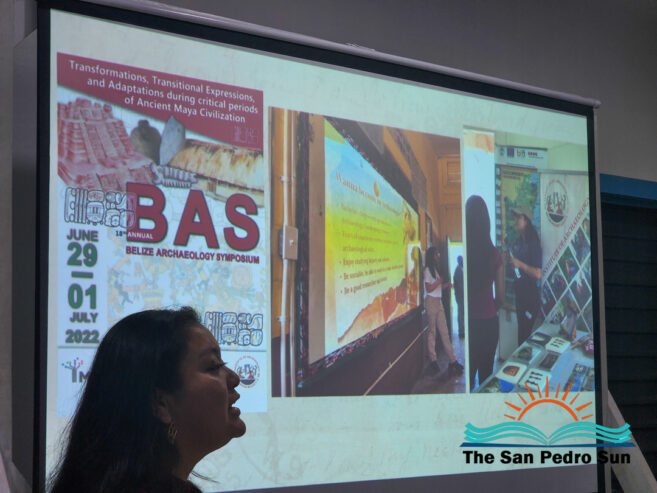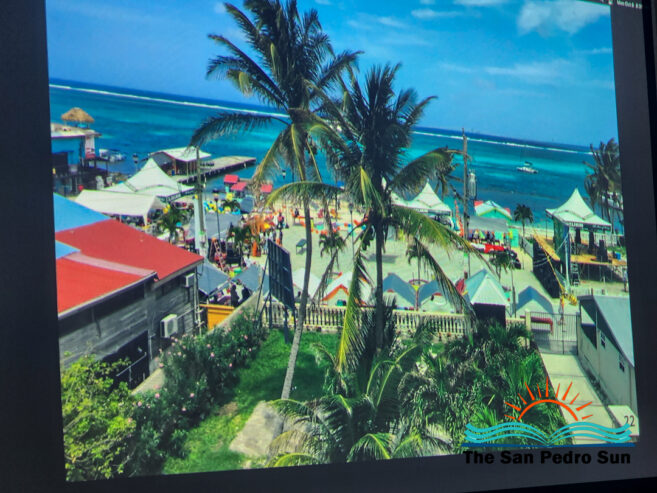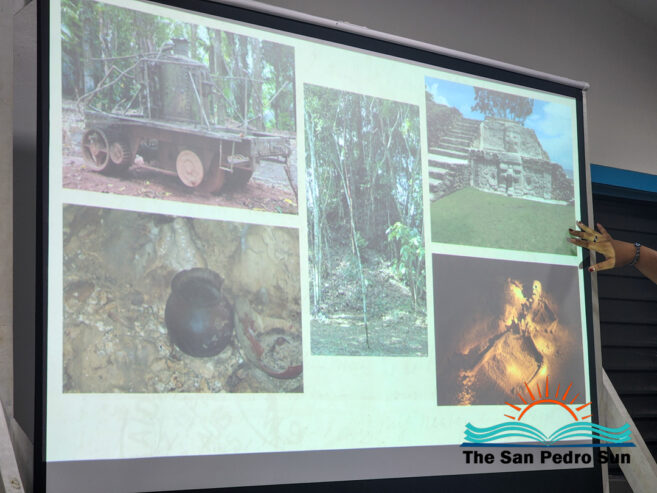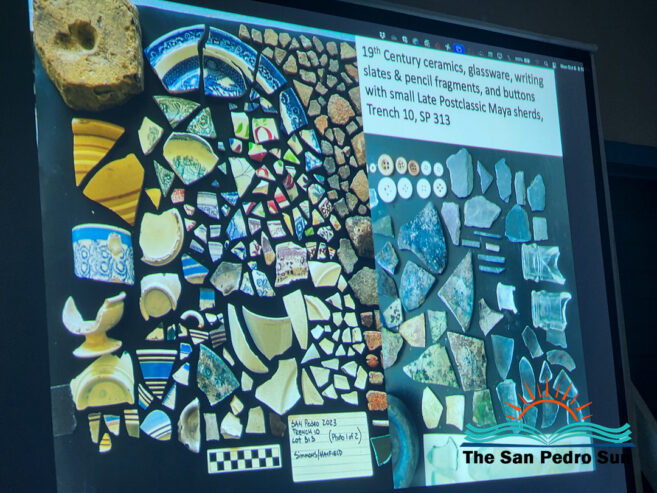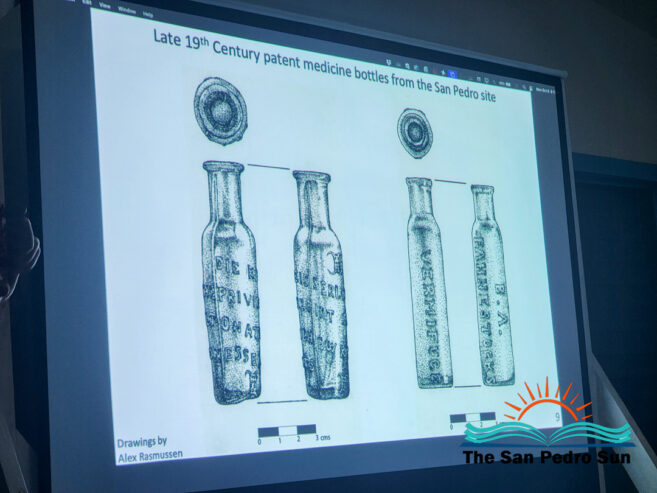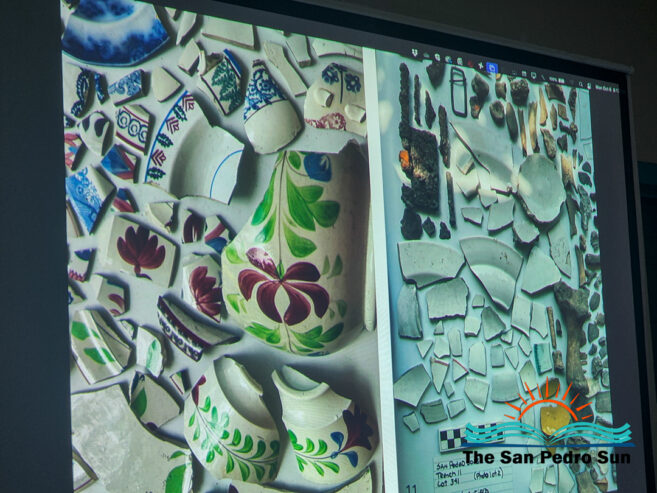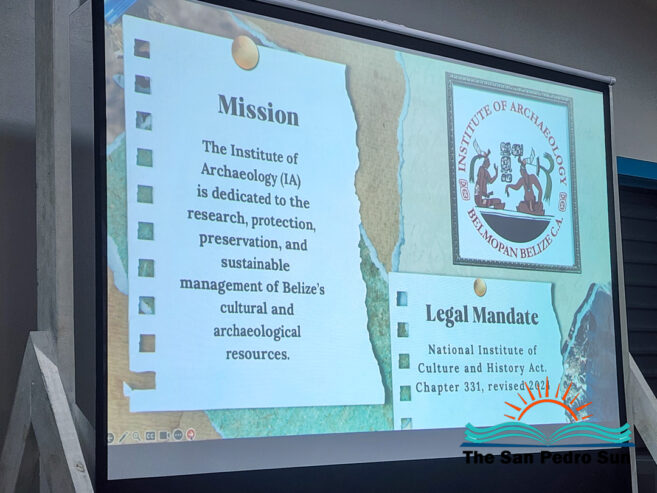On Monday, October 6th, 2025, a captivating free public presentation titled “Uncovering San Pedro’s Past” was held at the House of Culture in San Pedro. The event featured recent archaeological investigations conducted in downtown San Pedro, Ambergris Caye, presented by Dr. Scott Simmons, a professor from the University of North Carolina Wilmington, USA, along with Akirah August and Rumari Ku from Belize’s Institute of Archaeology under the National Institute of Culture and History (NICH). The presentation explored research spanning from Maya life predating Spanish contact to San Pedro’s 19th and early 20th-century history.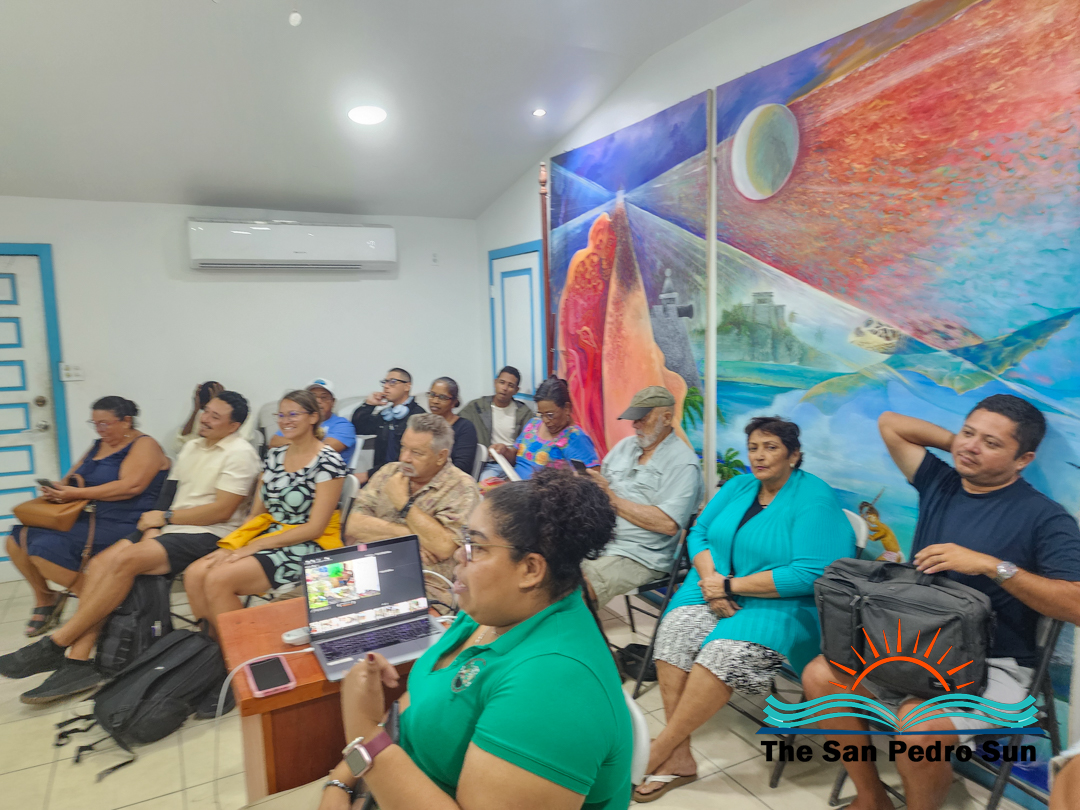
Archaeologists have uncovered a fascinating mix of artifacts, ranging from ancient pottery to 19th-century bottle fragments, found nearly a meter deep in downtown San Pedro, near Central Park. “We found mixtures of both ancient material and modern material up to that depth,” Dr. Simmons explained, noting that storms and hurricanes had disturbed the site over time. Among the discoveries were patent medicine bottles that once contained remedies for stomach aches, headaches, and other ailments, reflecting San Pedro’s early access to goods from Europe, Asia, and the Americas. Historical research also revealed that early San Pedrano families settled on Ambergris Caye, fleeing the Caste War in Mexico, bringing with them a variety of pottery and household items.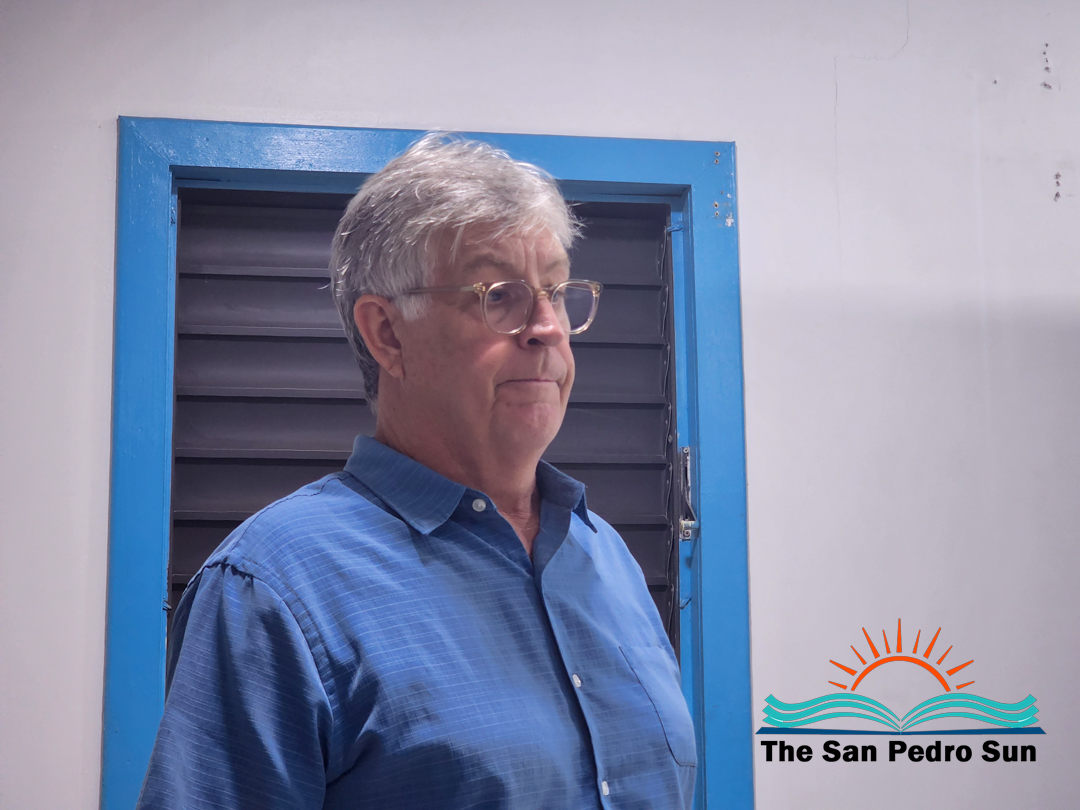
Further archaeological layers revealed evidence of Maya occupation, including floors, trash pits, and tools used for fishing and hunting, illustrating both domestic life and ritual practices. The presence of incense burners suggests that spiritual rituals were performed not only within homes but also in communal settings. “These little sensor fragments indicate household rituals that people worshipped in their own ways, not just big public events,” Dr. Simmons said. The team catalogued over 11,000 pieces of historic material, ranging from ceramics and glassware to metal ornaments and bone fragments, offering a vivid picture of San Pedro’s continuous cultural development.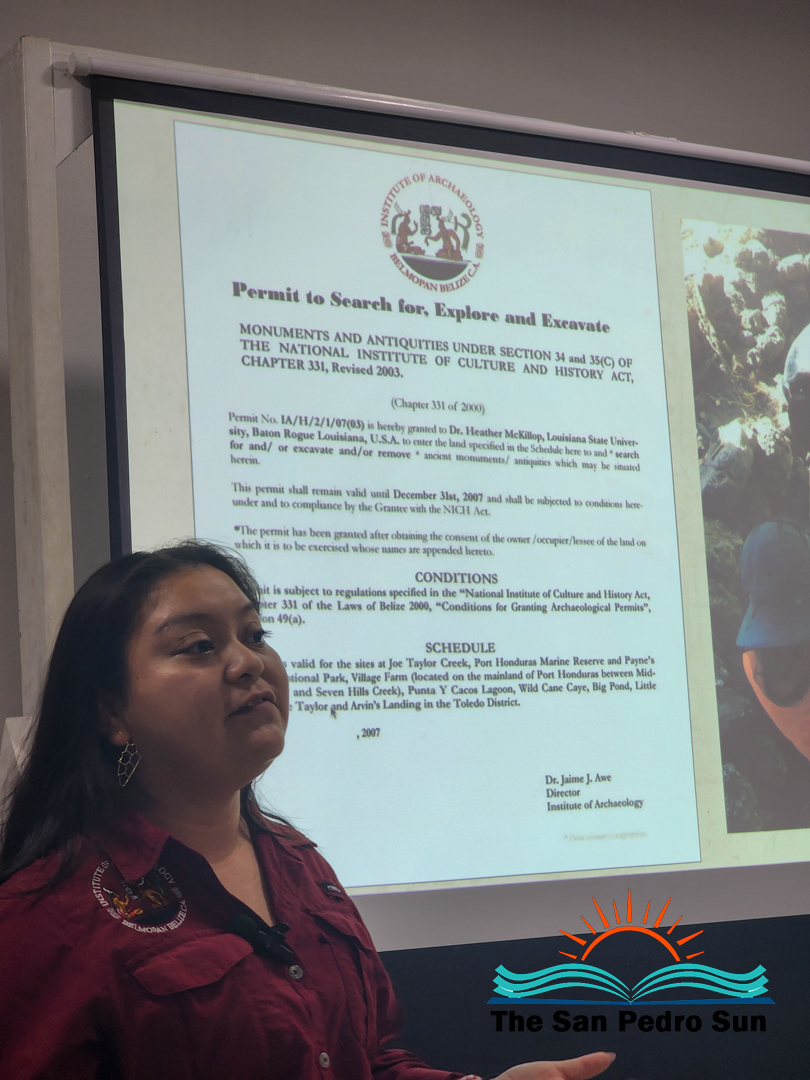
During the presentation, Akirah August emphasized the importance of proper archaeological policies and community participation in preserving Belize’s heritage. She stated, “If you find something, please report it. We won’t take it from you; we just want to know that you have it and where it is.” The Institute of Archaeology operates under the NICH Act, which was recently revised to strengthen penalties against illegal artifact trading and site destruction, and to protect archaeological reserves. August highlighted successful collaborations with local communities to promote awareness and safeguard cultural heritage, underscoring the importance of registering artifacts to preserve the research context.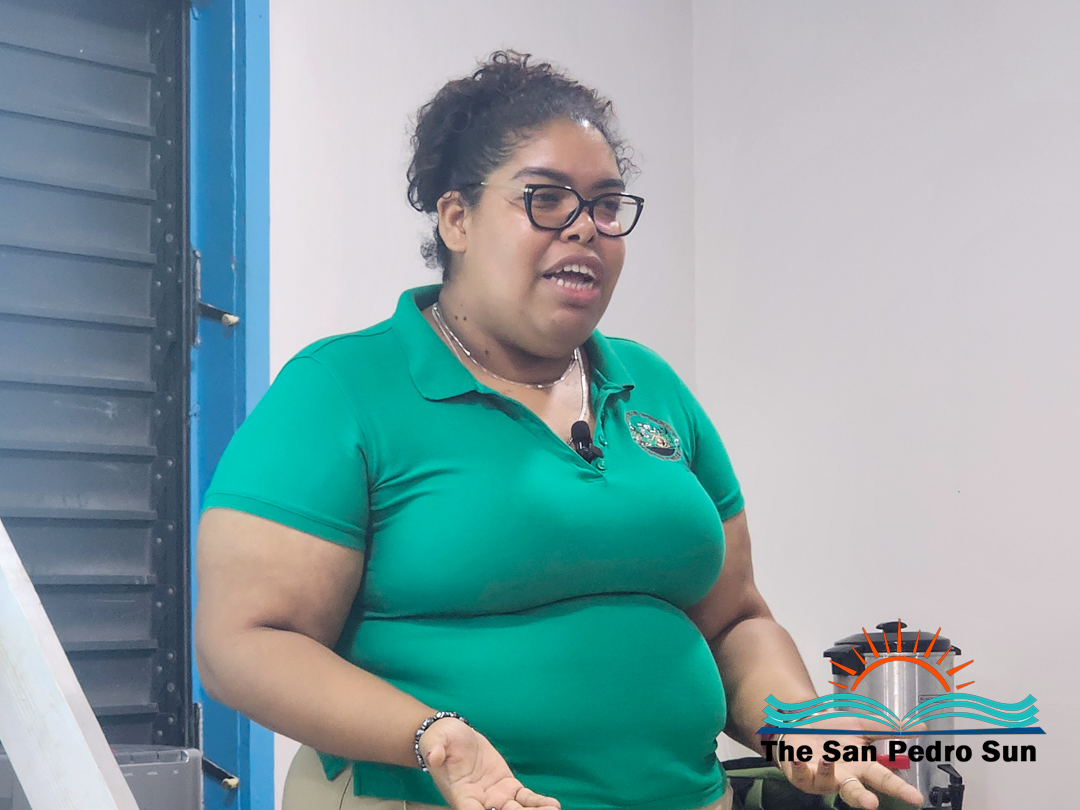
The implications of these archaeological investigations are significant. The discoveries beneath San Pedro’s modern landscape serve as a powerful reminder of the town’s deep historical roots and diverse cultural influences. Preservation efforts and public outreach aim to foster appreciation and protection of this heritage amid ongoing development. “Raising awareness that beneath the modern town, there lies a Maya town and a historic town is crucial. Ground-disturbing activities must be monitored carefully,” Dr. Simmons said.
The event underscored the need for continued research, education, and community involvement to ensure San Pedro’s history is preserved for future generations, an effort aligned with the mission of Belize’s archaeological and cultural preservation programs.

